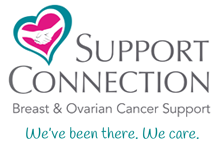 By Deanna Power, Community Outreach Manager, Social Security Disability Help
By Deanna Power, Community Outreach Manager, Social Security Disability Help
The following information was provided by Deanna Power, Community Outreach Manager for Social Security Disability Help, a resource whose aim is to assist people at all stages of the Social Security Disability application process, from initially applying, to keeping benefits after being approved. It is not affiliated with the Social Security Administration. If you’d like to ask SSDH for help with your claim, you are welcome to contact Deanna Power at drp@ssd-help.org.
Treatments for breast and ovarian cancer, such as surgery, chemotherapy and radiation, can result in the inability to work. Due to these hardships faced by thousands of Americans every year, the Social Security Administration (SSA) offers two different disability programs: Social Security Disability Insurance (SSDI) and Supplemental Security Income (SSI). These programs give those in need monthly benefits to help make ends meet while going through treatment.
Eligibility for SSDI is based on your work history and how many work credits you have earned. You will receive one “work credit” for every $1,260 of taxable income you earn in the year, with a maximum of 4 credits earned per year. Your total number of work credits needed to qualify will vary depending on your age. The SSA has a guide showing exactly how much you need to have worked to qualify for SSDI benefits.
The SSI program, on the other hand, is a needs-based program. No work credits are required to qualify. In order to qualify for this program, you must meet the financial criteria set forth by the SSA. As of 2019, this means you cannot have a household income of more than $771 per month as an individual or $1,157 per month as a couple.
Also for SSI: Your household must not have assets exceeding $2,000 as an individual or $3,000 as a couple. The SSA will include any saved cash or life insurance as an asset, but will not count the value of one home or one car towards your total asset amount.
Qualifying Medically
Even if you meet the above-mentioned criteria of the SSI and SSDI programs, you must still meet the SSA’s medical eligibility criteria in order to qualify for benefits. When you submit a claim for Social Security disability benefits, your condition is compared to a listing of conditions known as the Blue Book.
The Blue Book lists all of the conditions that could potentially qualify an individual for SSI or SSDI benefits, along with the criteria that must be met under each condition. Both ovarian and breast cancer are listed in the Blue Book. Breast cancer is listed in Section 13.10; ovarian cancer is listed in Section 13.23.
For breast cancer to qualify, it needs to be an advanced carcinoma (cancer of a specific cell), a carcinoma that has spread beyond the local breast tissue, or carcinoma that is recurrent despite treatment.
For ovarian cancer to qualify, it must be either:
- A non-germ cell tumor that has done one of the following:
- Spread beyond the pelvis
- Spread to additional lymph nodes
- Recurred after treatment
- A germ cell tumor that doesn’t respond to treatment.
For more details on how breast or ovarian cancer can specifically qualify, visit the SSA’s Blue Book listing, and speak with your doctor to learn more about your specific cancer.
The Compassionate Allowances Program
In some cases, when a case of cancer is severe and has progressed to a certain point, you may be able to qualify for benefits in a matter of days rather than a matter of months under the Compassionate Allowances program. Both breast and ovarian cancer can qualify as a compassionate allowance.
If your breast or ovarian cancer has metastasized to different organs of the body, is inoperable, or is recurrent despite your various treatments, you will qualify for a Compassionate Allowance.
The Social Security Disability Application Process
Once you have gathered your supporting documentation, or taken note of every doctor or hospital you received treatment from, you can apply online or in person at your local Social Security office. The SSA has an office locator that can help you find your closest Social Security office.
You can expect to receive a decision within five months or more of submitting your claim, unless you qualify under the Compassionate Allowances program. In that case, you would receive a decision regarding your claim within about two weeks of the date of your application.
If you meet the criteria set forth in the Blue Book, have properly filled out the application paperwork, and submitted the necessary supporting documentation, you should receive notice of an approval of benefits from the SSA stating: when benefits will begin, which benefits you qualify for, and how much you will receive each month.
Appealing a Denial of Benefits
Oftentimes a denial of benefits is caused by improperly completed claim forms, a lack of sufficient medical evidence, or some other error on the part of the applicant. An initial denial of benefits should not sway you from appealing the SSA’s decision, as many current disability recipients have had their benefits awarded through the process of a disability appeal. In fact, 70% of applicants are initially denied, but nearly half of them receive benefits after appealing either online or in front of a judge.
If you are denied benefits for any reason, you have 60 days from the date of the notice to appeal the SSA’s decision. You can appeal the initial denial online. If you are denied again, you can still appeal, but you will need to defend your case in front of a judge.
For more information on the entire application and appeals process, visit the SSA’s website or call them toll-free at 800-772-1213.
